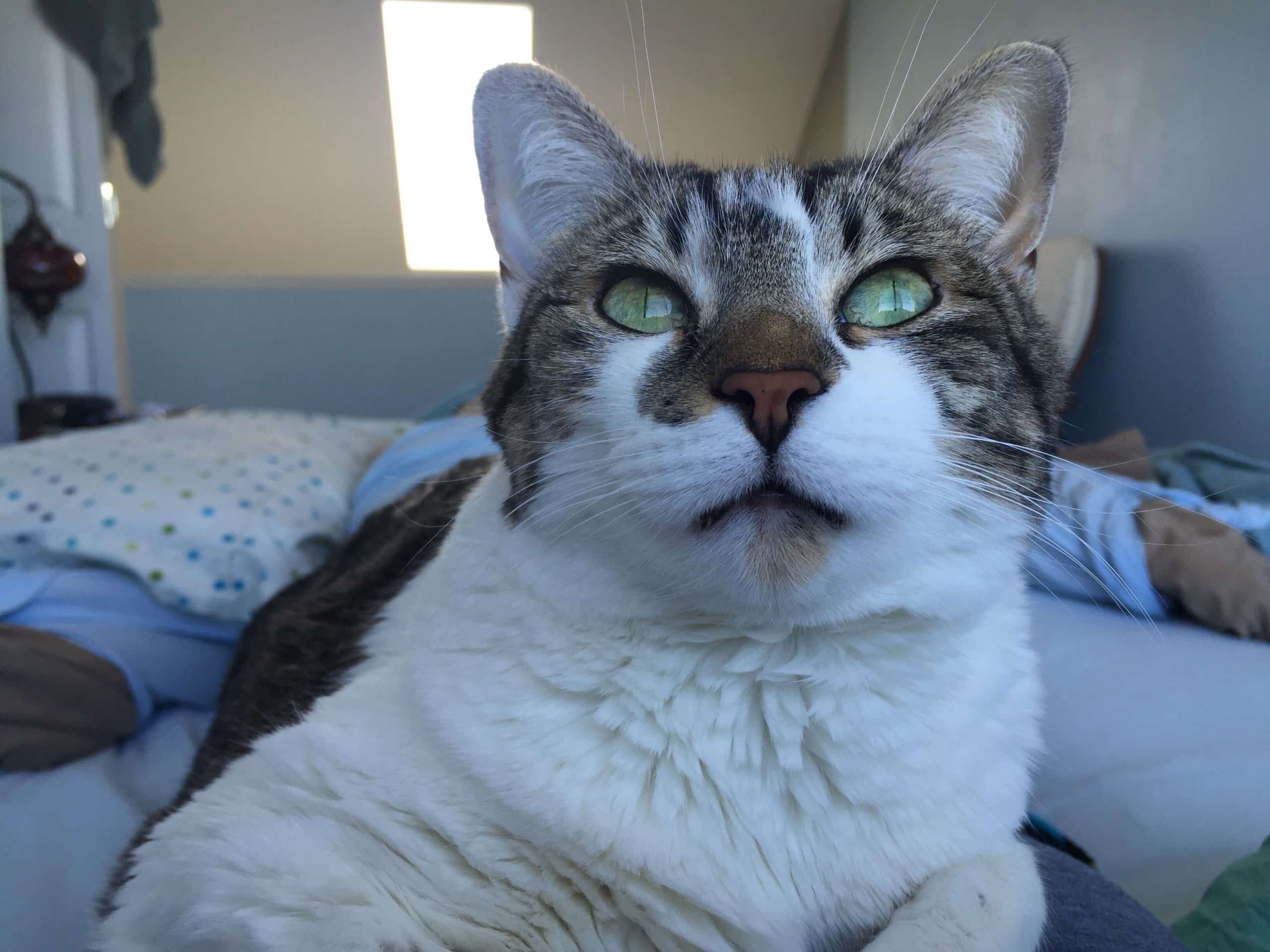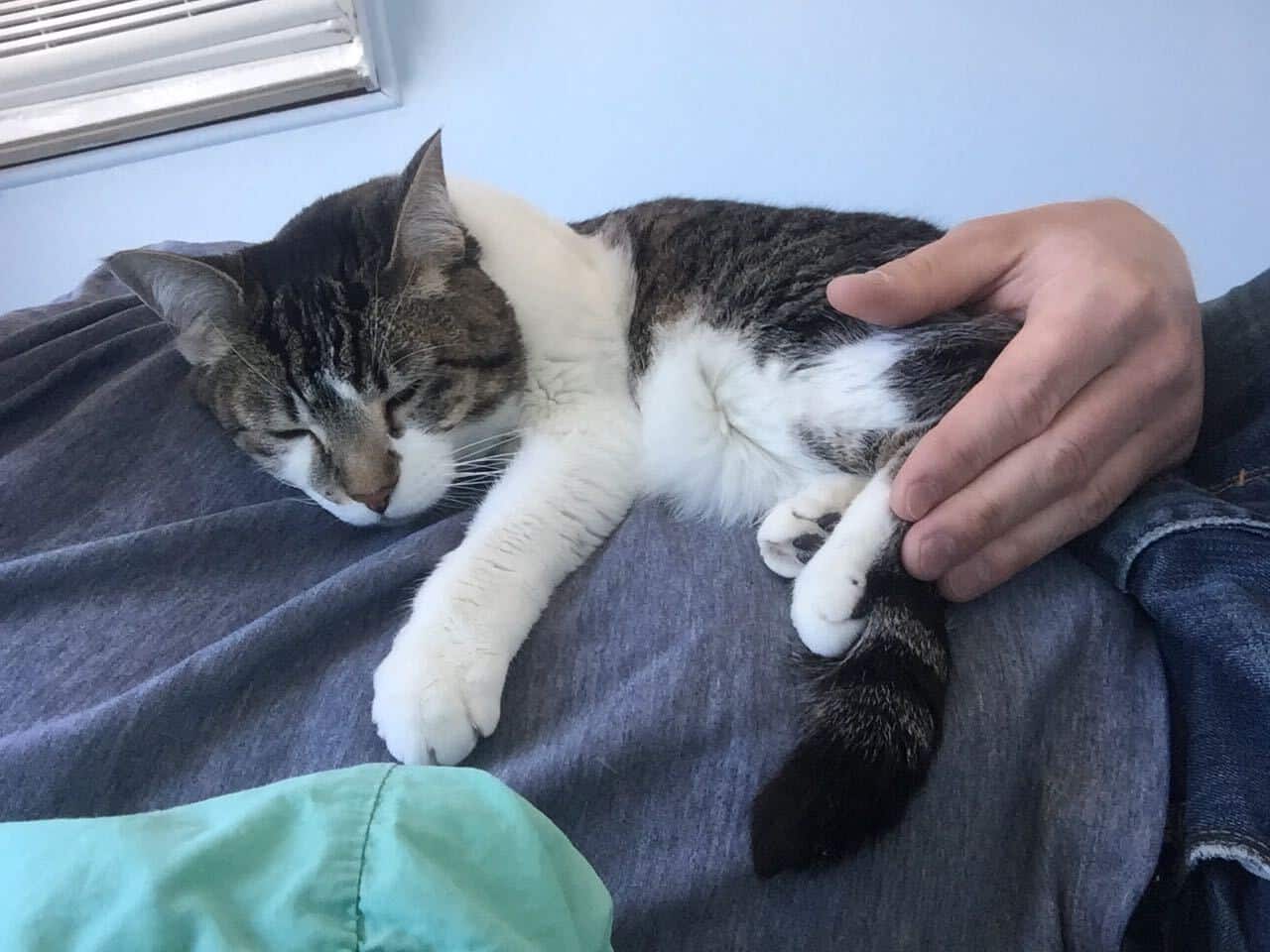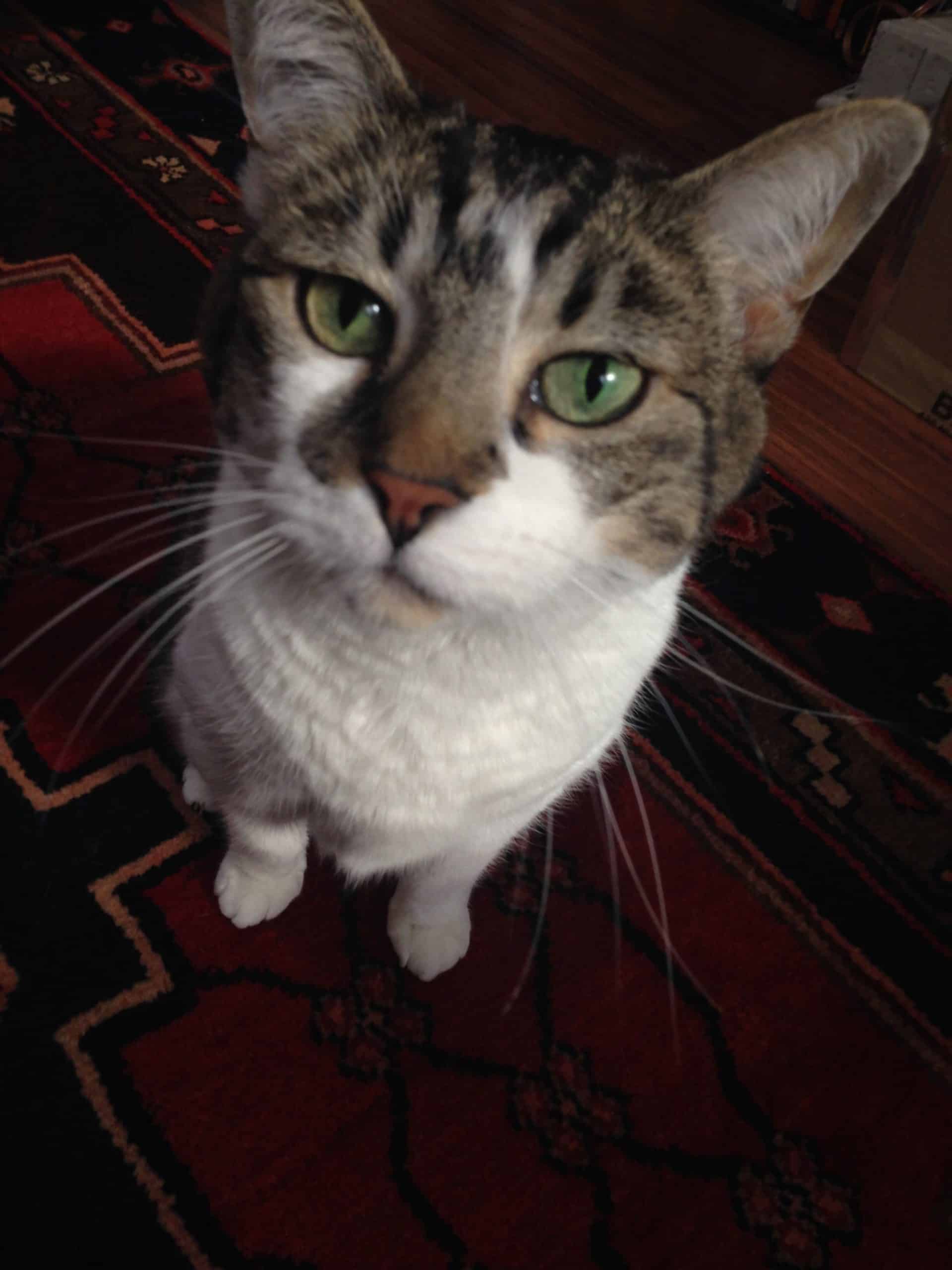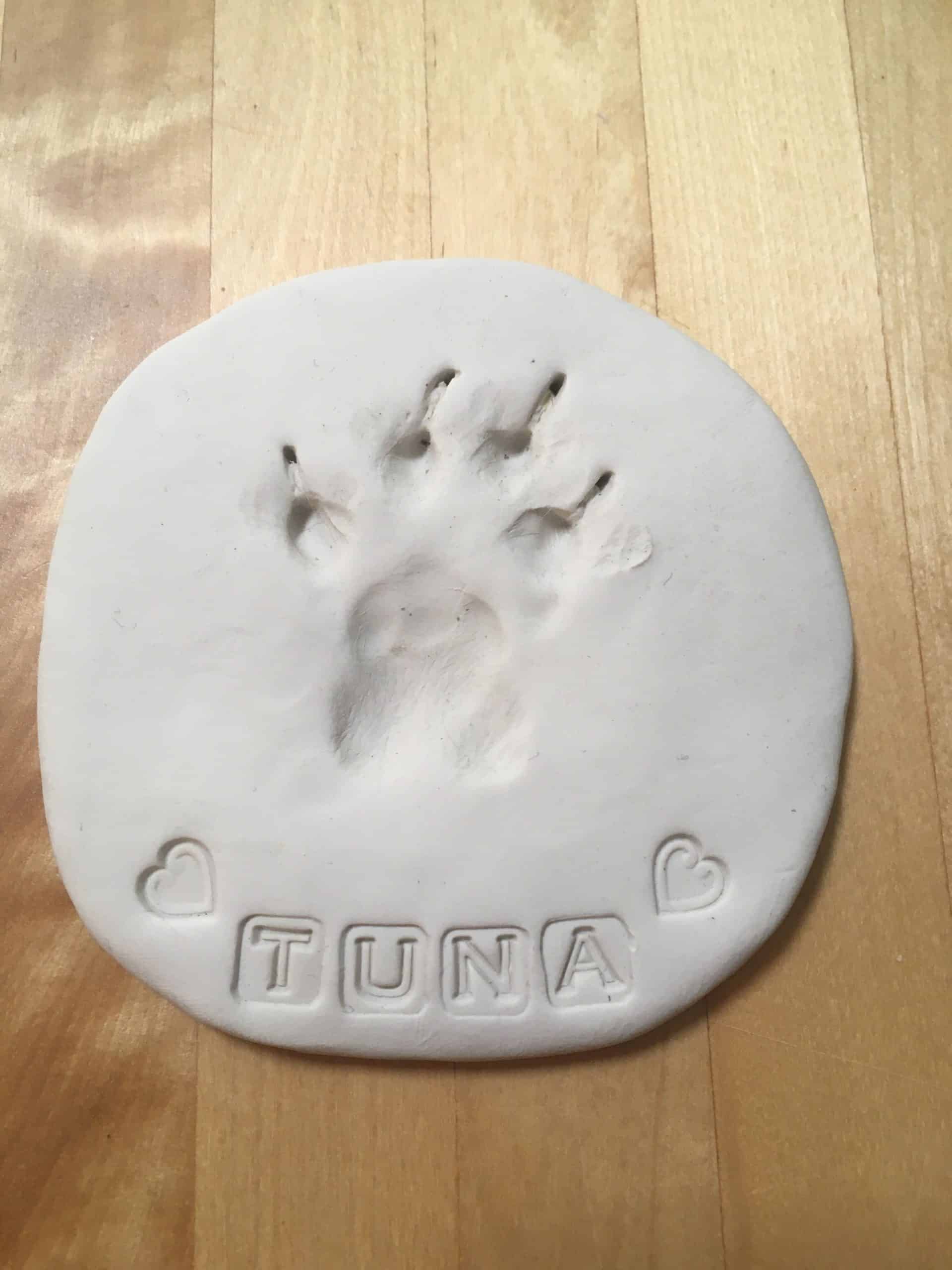Pet cancer visited our home for the first time the summer between my second and third years of vet school. My husband and I had just gotten back from dinner and our 5-year-old cat, Tuna, who normally greeted us at the door, was nowhere to be seen. We checked her usual napping spots and still, no Tuna. I looked in the very back of a closet and saw her crouched behind some boxes. It didn’t appear that there was anything overtly wrong, but the fact that she was hiding told me she was not okay. We took her to the CSU emergency room.

Tuna’s Diagnosis
Tuna was diagnosed with high grade, B cell intestinal lymphoma. As a vet student, I knew it was “the bad one.” We were swiftly referred to the oncology service and told that while chemo would extend Tuna’s life by a few months, that it would likely not be possible to save her. We were shocked, grief-stricken and lost. Even with two years of veterinary medical education under my belt, nothing prepares you for a life-limiting diagnosis of a beloved pet.

Treatment
My first thought was that I did not want to put Tuna through chemo. I knew chemo for animals is not the same as in humans: it is more gentle, less aggressive because the goal is more quality of life, not necessarily eradicating disease completely. I also knew Tuna would be a good patient for the weekly blood draws. She never hissed or got mad at anyone. Still, I wondered if it would be worth it for her. My husband, Jeff, was the optimist. He wanted to pursue the very small chance that Tuna might go into remission with chemo, that we might get a year or more with her. We sat in the oncology exam room with Tuna sitting on my lap, weighing our options. When we paused our conversation for a moment and looked at her, she reached out and placed her paw in Jeff’s hand. We decided to give chemo a try.
Chemotherapy gave us two more months with Tuna, a blessing, but not the miracle we so desperately hoped for. The experience was an education like no other. It was a summer of firsts: the first time giving oral medications 5 times daily to an unwilling patient; the first time moving a mattress downstairs for “slumber parties,” as I called them, because Tuna eventually stopped climbing the stairs to sleep in our bed; the first time feeling both grateful for extra time and anxious, knowing that the clock was ticking.

Saying Goodbye
After two months, Tuna’s appetite started to wane on a Friday. An ultrasound revealed that her tumor had grown in size, meaning that her chemo was no longer working. The oncologist suggested we try a new protocol of different drugs, a last ditch effort to buy her a bit more time. Again we entered the agony of decision making but wouldn’t be able to take next steps until Monday. The next day I woke up and Tuna was crying. It was a sharp, surprisingly loud sound I’d never heard her make before. She was standing in her litter box, vomiting and clearly in pain. I woke my husband up and said, “It’s time. We need to let her go today.” I called a local provider of in-home euthanasia, in tears. Their veterinarians were already booked for the day. I started searching for any other vets who could come to our home on short notice and couldn’t find anyone. I felt vulnerable and afraid and guilty for letting Tuna get to this point and was afraid we’d have no choice but to take her to the ER for euthanasia. Fortunately, the euthanasia provider called back and said they had a cancellation and that a vet could come within the hour. With Tuna on my husband’s lap and both of us sobbing, we said goodbye to our sweetest, most gentle little kitty.

At Caring Pathways, we are here to support you and your pet on their end-of-life journey, including after a cancer diagnosis. If your pet recently has experienced a cancer diagnosis, please visit Dr. Mavi’s blog: How to Approach the End-of-Life Decision for Your Pet After A Cancer Diagnosis
There are many quality of life assessment tools on our website and if you are seeking guidance from a veterinarian, consider scheduling a TeleAdvice Appointment or an In-Home Consultation Appointment. In the meantime, remember to care for yourself too as your pet’s caregiver, celebrate and cherish every day that remains with your pet, and you can never have too many photos or videos of your loved one.
Written by: Dr. Mavi Graves, Caring Pathways Veterinarian
Dr. Mavi moved back to Colorado to attend vet school at CSU. While at CSU, she served as a manager of the student volunteer pet hospice program and that’s when she discovered end-of-life care as her veterinary calling. Dr. Mavi feels that the end-of-life journey is an incredibly sacred and meaningful time to serve pet families and she feels strongly about the importance of letting pets pass away at home. It is an honor to facilitate gentle and peaceful euthanasia experiences and to that end, Dr. Mavi has earned her Fear-Free Certification. She is also working towards acupuncture certification and strives for excellence and personal betterment in supporting pet owners through what may be one of the most difficult days of their lives.

